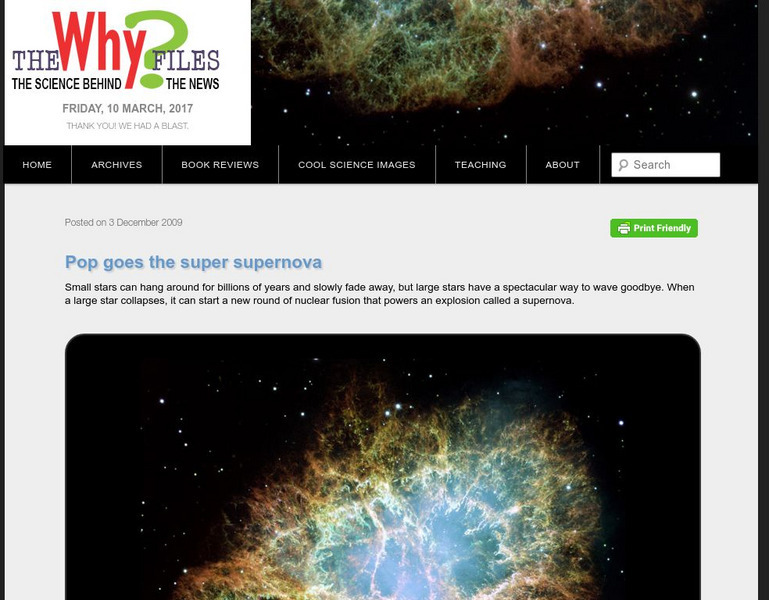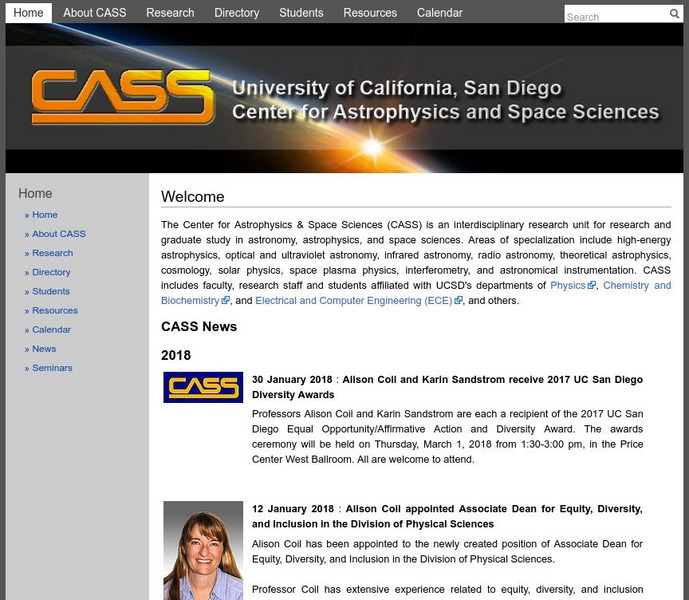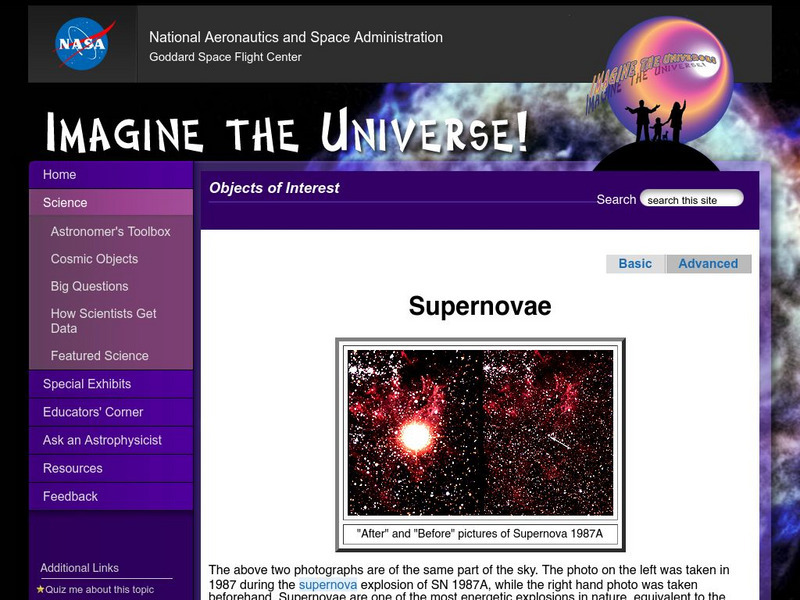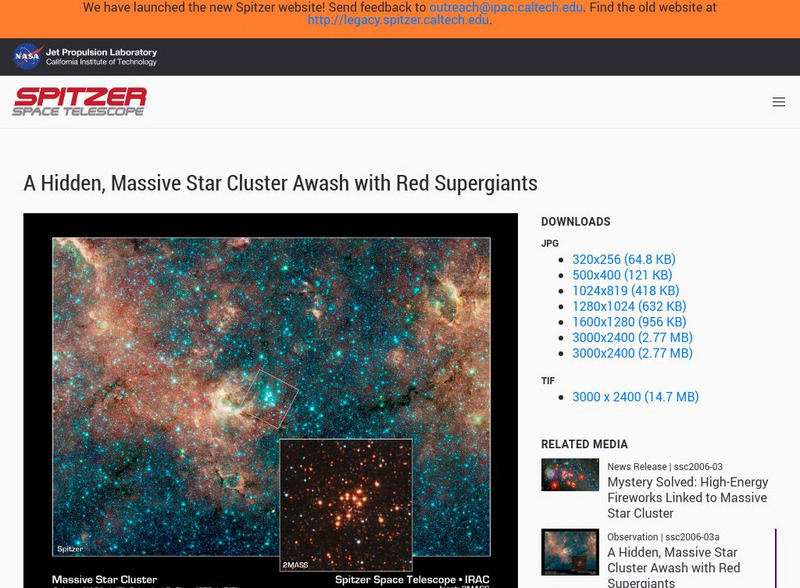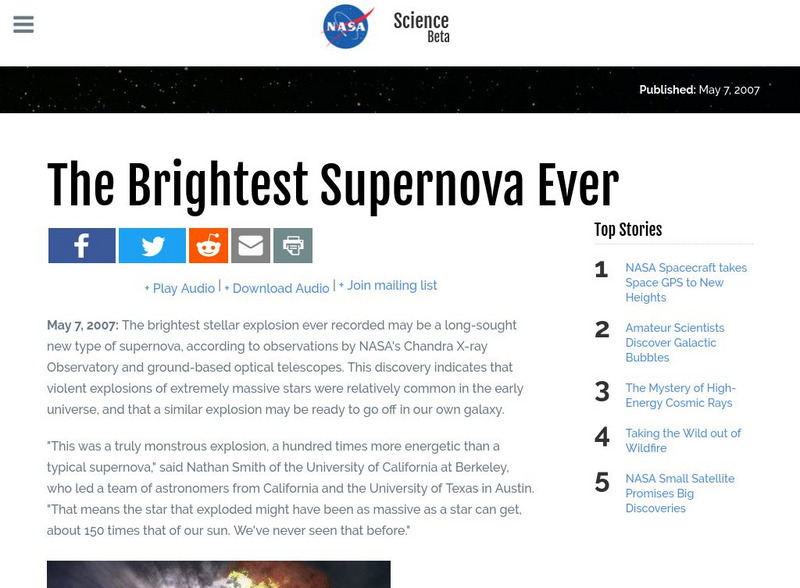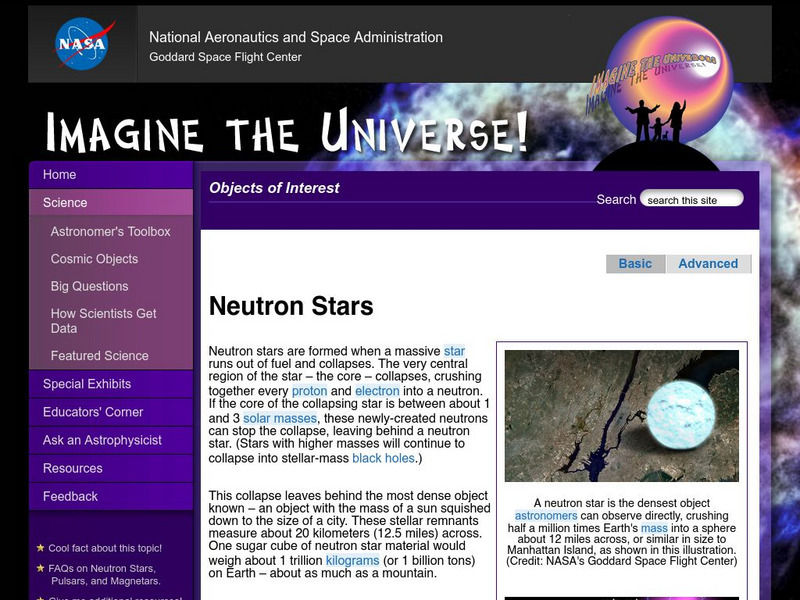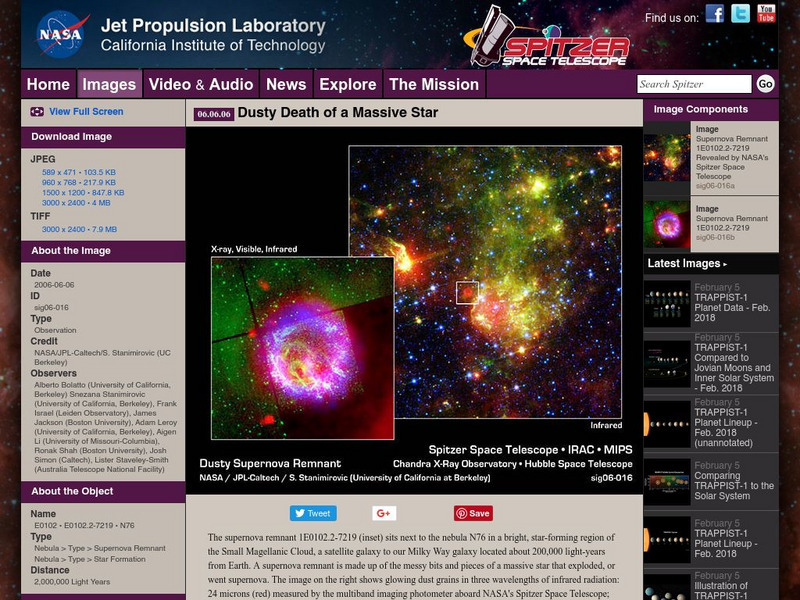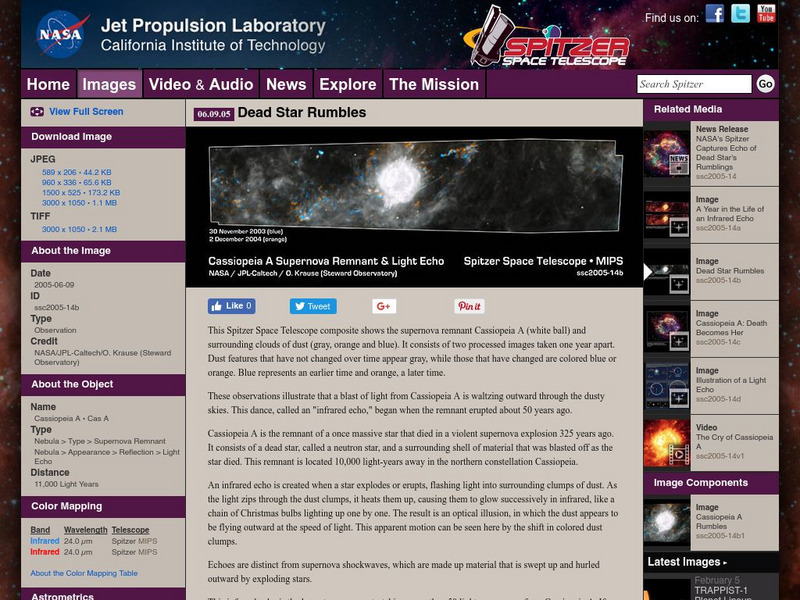Curated OER
Taking Risks: Drug and Alcohol Abuse
Students discuss a video about drug and alcohol abuse and their connection to risk-taking. They answer questions on a risk factor sheet about the use of tobacco, drugs, and alcohol. They discuss long and short term goals and how not...
University of Wisconsin
The Why Files: Pop Goes the Super Supernova
Small stars can hang around for billions of years and slowly fade away, but large stars have a spectacular way to wave goodbye. When a large star collapses, it can start a new round of nuclear fusion that powers an explosion called a...
University of California
University of California:center for Astrophysics & Space
Supernovae, neutron stars, and pulsars are topics on this page. Extensive section on pulsars that presents information on their discovery, characteristics, evolution, and location.
NASA
Nasa Space Place: What Is a Supernova?
Discover interesting facts about supernovas, what causes them, how bright they are, and how do scientists study them.
PBS
Pbs Learning Media: Birth of a Supernova, Type Ii
In this interactive activity from NOVA Online, learn about a type of exploding star a Type II supernova that is so large it has a mass 10 times greater than the mass of our Sun.
PBS
Pbs Learning Media: Birth of a Supernova, Type Ia
In this interactive activity from NOVA Online, learn about a type of exploding star - a Type Ia supernova - that is so bright that astronomers can measure the distance to the galaxy in which it resides, and even learn which elements make...
NASA
Nasa: Imagine the Universe: Supernovae (Advanced)
Supernovae are divided into two basic physical types, including a description of supernova types and how they are classified based on the existence of hydrogen spectral lines. Definitions of key terms are provided.
Georgia State University
Georgia State University: Hyper Physics: Supernovae
This site from Georgia State Department Astronomy & Physics provides information on the Supernovae. "A supernova is an explosion of a massive supergiant star." Find out much more at this site.
NASA
Nasa: Imagine the Universe: Supernovae (Basic)
A detailed description of a supernova developing from a single massive star. There is a quiz, related links, animation, lesson plans, and an FAQ sheet available also.
University of Utah
University of Utah: Aspire: Life Cycle of a Star
Experience this impressive interactive website about the life cycle of a star.
TED Talks
Ted: Ted Ed: How to Detect a Supernova
Just now, somewhere in the universe, a star exploded. In fact, a supernova occurs every second or so in the observable universe. Yet, we've never actually been able to watch a supernova in its first violent moments. Is early detection...
CK-12 Foundation
Ck 12: Earth Science: Supergiants and Supernovas
[Free Registration/Login may be required to access all resource tools.] Explain the importance of supernovas and how a star becomes a supergiant.
European Space Agency
European Space Agency: Esa Kids: Our Universe: Supernovas
A basic overview of supernovas. Links to more information about starts, planets and other objects in our solar system and galaxy are included.
CK-12 Foundation
Ck 12: Earth Science: Life Cycle and Classification of Stars Study Guide
[Free Registration/Login may be required to access all resource tools.] This study guide summarizes key points about types of stars and he life cycle of a star. Includes a few questions to check for understanding.
CK-12 Foundation
Ck 12: Earth Science: Life Cycles of Stars
[Free Registration/Login may be required to access all resource tools.] Examines the formation of a star and the main sequence of the star's life cycle.
Space Telescope Science Institute
Nasa: Hubble Space Telescope: Stars
At this site from the HubbleSite you can learn all about a star's life, birth, and death. Site contains links to a star movie as well as space/time location.
California Institute of Technology
Spitzer Science Center: Massive Star Cluster
Under the heading, "A Hidden, Massive Star Cluster Awash with Red Supergiants" this site examines specific details of an infrared image displaying 14 massive stars close to supernova. A detailed text analysis of the picture is also...
NASA
Nasa Science: The Brightest Supernova Ever Seen
Article explores the supernova of a star that is possibly "150 times more massive than our Sun." The primary observations of the explosion were accomplished through the Chandra X-ray Observatory. (May 7, 2007)
NASA
Nasa: Imagine the Universe: Gamma Rays From Supernovae and Supernova Remnants
Astronomers use gamma decay to study the lives of the stars.
BBC
Bbc: Gcse Bitesize: The Life Cycle of a Star
This lesson focuses on the formation and life cycle of stars. Stars form when enough dust and gas clump together because of gravitational forces. Nuclear reactions release energy to keep the star hot. Some stars grow larger over time....
NASA
Nasa: Imagine the Universe: Neutron Stars and Pulsars
Discover what neutron stars and pulsars are and view pictures of them. Includes links to additional resources and lesson plans.
California Institute of Technology
Spitzer Science Center: Dusty Death of a Massive Star
Under the heading, "Dusty Death of a Massive Star" this site examines specific details of an image displaying bits and pieces of a star after a supernova. The image is enhanced and enlarged in a second picture.
University of Illinois
University of Illinois: Stars and Constellations: White Dwarf Supernovae
Discusses the formation of the white dwarf and the role this star plays in the formation of a white dwarf supernovae.
California Institute of Technology
Spitzer Science Center: Dead Star Rumbles
This image, titled "Dead Star Rumbles" features a medium-sized image of the remnants of Cassiopeia A and its surrounding infrared echo. The text under the image details various specifics about the picture.



